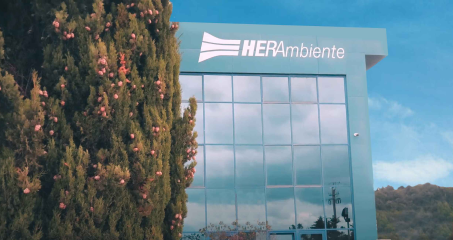Serravalle Pistoiese (PT) landfill: 180 thousand bees certify the quality of the surrounding environment
26/05/2023
Presented yesterday to the Citizens' Committee for the Landfill the first results of the biomonitoring with bees, sponsored by Herambiente. Analyses conducted on the bees themselves and the products of the hives attest the plant's lack of impact on the quality of the surrounding environment. The study will continue for another 12 months

The presentation of the results to the Citizen's Committee for the Landfill
Bees promote the quality of the environment surrounding the Serravalle Pistoiese landfill.
The first results of the biomonitoring project called Capiamo, presented yesterday afternoon to the Citizen's Committee for the Fosso del Cassero Landfill, are therefore entirely comforting and show no impact of the plant on adjacent air, water and soils.
Analyzed the work of 180 thousand bees on 28 km2
In April 2022, the operator of the landfill, Herambiente, in collaboration with Apicolturaurbana (a company specializing in biodiversity and environmental education projects), activated a voluntary biomonitoring with bees in a large area around the plant to add an additional level of safety to the controls already normally required by law. The Capiamo project, in fact.
Thus, 3 hives were placed for a total of 180 thousand bees, by their nature true 24-hour environmental sentinels. These precious insects, in fact, come into daily contact with a huge number of very different environmental matrices. Suffice it to say that a foraging bee (deputed, that is, to collect nectar) visits an average of 2,000 flowers per day, within a radius of 3 km from the hive. Thus, in the case of Serravalle, about 18 million micro-samples were possible each day over an area of about 28 km2. In addition to flowers, there is water in various forms (puddles, rivers, dew, etc.), tree resin and, of course, air. Substances in the environment then accumulate within the hive, on the bees themselves and their products (bee bread, wax and honey), making it quick and easy to retrieve highly representative samples for analysis. Samples from which the presence of pollutants, such as pesticides, heavy metals and polycyclic aromatic hydrocarbons, in the air can be assessed. All parameters that, if detected in significant concentrations, would indicate the presence of conditions that could generate potential damage to the ecosystem.
Between April and October 2022, the work of the bees was constantly monitored through sampling on wax, beeswax, honey, and the foraging bees themselves. The samples were then analyzed by an independent laboratory. In addition, Apicolturarbana workers periodically monitored the behavior and health of the insect community. In fact, signs of possible environmental damage can be detected immediately, mainly due to two indicators: high mortality in the case of insecticides and the presence of residues that can be found in bee bodies or hive products (for example, due to the presence of pollutants such as heavy metals).
Monitoring outcomes: no impact of the landfill on the surrounding environment
In recent days, the report of the first year of monitoring was prepared. The study, even beyond the aspects strictly related to the landfill, provided valuable insights into the health of the surrounding environment. The set of investigations conducted showed the complete absence of contributions attributable to the activities carried out at the plant site. For all the contaminants monitored (heavy metals, pesticides, and polycyclic aromatic hydrocarbons), concentrations below or slightly above the quantification limits were detected; thus, completely in line with areas on which no landfill facilities insist.
Already started the second monitoring campaign: results in 2024
With the first monitoring campaign over, the bees have already been back to work in the hives at the landfill for a few weeks. In fact, a second study entirely similar to the previous one is planned for 2023, the results of which will be available in the spring of 2024. This will provide a deeper dataset that can confirm the first findings or highlight any deviations from the existing situation.
Romagnoli: "an additional element of peace of mind."
"I take a very positive view of this monitoring," explains Francesco Romagnoli, Chairman of the Citizens' Committee for the Cassero Landfill. "This is an additional element of tranquility for citizens in the certainly delicate management of a facility like the Serravalle landfill."
Ramonda: "a tool for transparency and discussion with the community"
"First of all, we are very pleased with the first outcome of the monitoring, which shows that the landfill has no impact on the surrounding environment," explains Andrea Ramonda, Herambiente CEO. "Beyond the technical findings, however, we believe that this voluntary monitoring can be a tool for transparency and discussion with the community, on an issue whose delicacy and importance to all residents we well understand."

